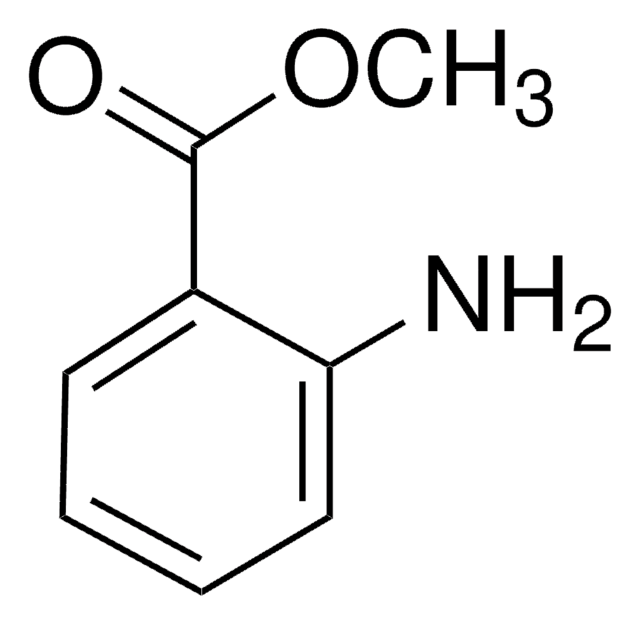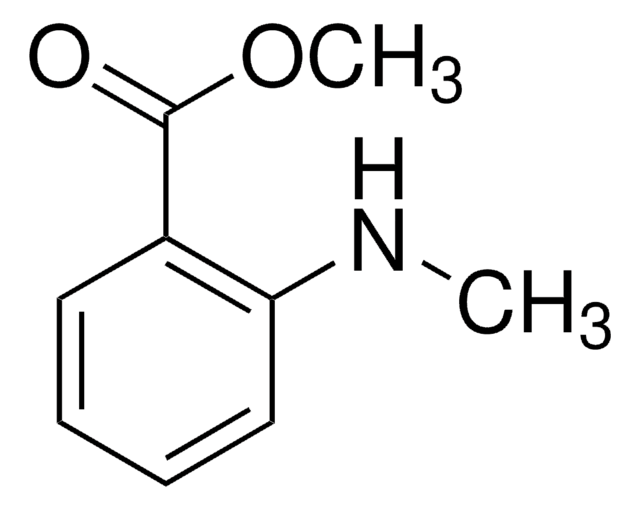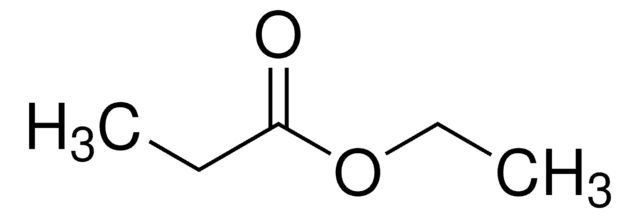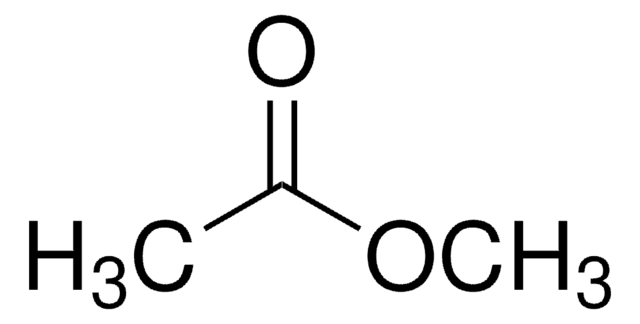W271802
Dimethyl anthranilate
≥97%, FG
Synonym(s):
Methyl N-methylanthranilate
About This Item
Kosher
Recommended Products
biological source
synthetic
Quality Level
grade
FG
Kosher
reg. compliance
EU Regulation 1334/2008 & 178/2002
FDA 21 CFR 172.515
Assay
≥97%
refractive index
n20/D 1.579 (lit.)
bp
256 °C (lit.)
mp
17-19 °C (lit.)
density
1.126 g/mL at 25 °C (lit.)
application(s)
flavors and fragrances
Documentation
see Safety & Documentation for available documents
food allergen
no known allergens
Organoleptic
grape skin; floral; fruity; sweet
SMILES string
CNc1ccccc1C(=O)OC
InChI
1S/C9H11NO2/c1-10-8-6-4-3-5-7(8)9(11)12-2/h3-6,10H,1-2H3
InChI key
GVOWHGSUZUUUDR-UHFFFAOYSA-N
Looking for similar products? Visit Product Comparison Guide
General description
Application
- Methyl N,N-dimethylanthranilate and ethyl propionate: repellents effective against spotted wing drosophila, Drosophila suzukii.: This study presents methyl N,N-dimethylanthranilate as an effective repellent, providing insights into potential pest management strategies for protecting crops from Drosophila suzukii, a significant agricultural pest (Conroy et al., 2024).
- Investigation into the characteristic volatile flavor of old duck.: This article discusses the role of dimethyl anthranilate in influencing the volatile flavor profile of aged duck meat, suggesting applications in enhancing food flavors and improving consumer appeal (Duan et al., 2023).
- Effects of Dimethyl Anthranilate-Based Repellents on Behavior, Plumage Condition, Egg Quality, and Performance in Laying Hens.: Research explores the use of dimethyl anthranilate-based repellents in poultry, focusing on their safety and effectiveness in maintaining the health and productivity of laying hens, highlighting its potential in agricultural practices (Terčič et al., 2020).
Signal Word
Warning
Hazard Statements
Precautionary Statements
Hazard Classifications
Eye Irrit. 2
Storage Class Code
10 - Combustible liquids
WGK
WGK 1
Flash Point(F)
216.7 °F - closed cup
Flash Point(C)
102.6 °C - closed cup
Personal Protective Equipment
Choose from one of the most recent versions:
Already Own This Product?
Find documentation for the products that you have recently purchased in the Document Library.
Our team of scientists has experience in all areas of research including Life Science, Material Science, Chemical Synthesis, Chromatography, Analytical and many others.
Contact Technical Service







